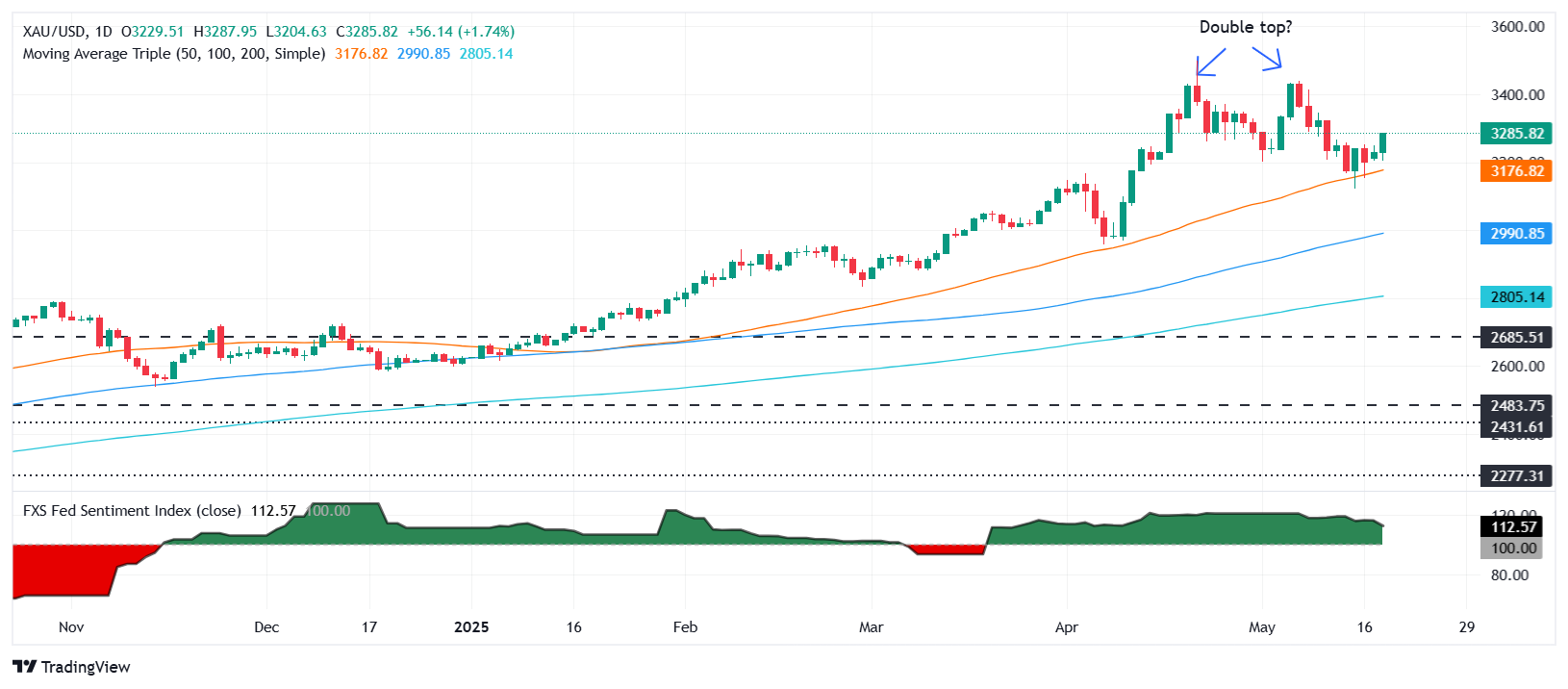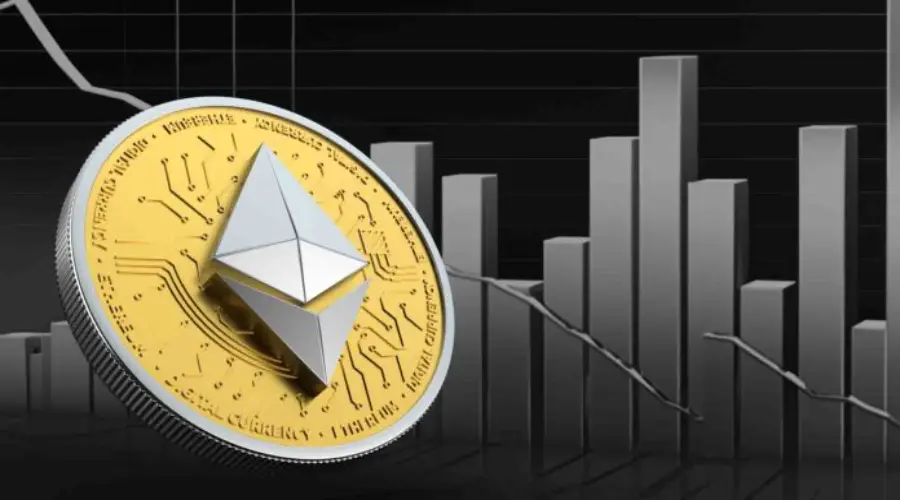- Gold earns more than 1.5% despite the firm yields of the US while the markets digest the US fiscal reduction, the caution of the Fed and the cuts of global rates.
- Moody’s reduced the US credit rating of AA1 to AA1 last Friday, which affected the feeling of risk and increased the demand for gold.
- Fed officials remain cautious, with Bostic favoring only a rate cut in 2025; Hammack warns about the increase in stagflation risks.
- Global rates cuts by PBOC and RBA add up to the bullish impulse for non -generating performance as gold.
The price of gold advances for the second consecutive day on Tuesday, since the dollar continues to register losses due to uncertainty about commercial policies and fiscal health of the United States (USA) after the reduction of US debt by Moody’s last Friday. The XAU/USD quote $ 3,278, with an increase of more than 1.50% at the time of writing.
The yellow metal demand has increased as US variable markets became red during the American session. Moody’s adjustment to the debt of the US government of AAA to AA1, stable with a negative perspective, weighed on the feeling of investors, which led to an increase in gold positions.
Meanwhile, the tone of Federal Reserve officials (FED) remains cautious. However, none of them have opened the door to reduce interest rates in the midst of an economic deceleration in the US on Monday, Raphael Bostic of Atlanta Fed said it favors a cut in 2025.
Beth Hammack of Cleveland’s Fed declared that US government policies have increased the difficulty for the Fed to manage the economy and fulfill its double mandate. He said that the chances of a stagflation scenario are increasing. Recently, Alberto Musalem of St. Louis’s Fed said monetary policy is well positioned.
Consequently, the yields of the US Treasury bonds remain raised during the session, but it has not been an excuse for gold prices to shoot.
The main central banks that reduce interest rates are also bullish for gold. During the Asian session, the Popular Bank of China (PBOC) reduced interest rates, followed by the Bank of the Australian Reserve (RBA), which cut the cash rate from 4.10% to 3.85%.
Apart from this, geopolitics is also playing a role in increasing xau/USD prices, since the failure in achieving a high fire between Russia and Ukraine and the increase in tensions in the Middle East could keep investors inclined towards the yellow metal.
This week, the operators will be attentive to the Speeches of the Fed, the PMIS Flash, the housing data and the initial applications of unemployment subsidy.
Movements of the daily gold market: recovery extends in the middle of the high yields of the US and Fed hard line comments
- The yields of the US Treasury bonds have increased due to the actions of Moody’s, with the 10 -year Treasury bonus yield of the US at about 4.477%, uploading almost three basic points (PBS). Meanwhile, the real US yu. Three PBS also rise to 2,117%.
- The US dollar index (DXY), which tracks the performance of the US currency compared to six others, falls 0.21% to 100.17. Although it remains above the daily minimums of 100.06, operators seeking security have moved to the yellow metal.
- The president of the Fed of St. Louis, Alberto Musalem, said that if inflation expectations are disagree, the FED policy should focus on price stability. He said there is uncertainty about whether tariffs would have a temporary or persistent effect on inflation.
- Last week, Moody’s, the International Qualification Agency, reduced the qualification of the US government of AAA to AA1. They stressed that more than a decade of inaction by successive administrations and the US Congress has contributed to the deterioration of the country’s fiscal position, generating concerns about the sustainability of long -term debt.
- Given the context, the main banks are convinced that the yellow metal will continue its recovery towards next year. Goldman Sachs predicts that gold will average $ 3,700 for the end of the year, and then reach $ 4,000 in mid -2026.
Technical perspective of Xau/USD: Double roof canceled, the climb of gold continues
The price of gold is ready to extend its recovery and cancel a ‘double ceiling’ graphic pattern that emerged five days ago. As the yellow metal has continued to register successive days of higher and higher minimums, the Xau/USD could reach $ 3,300 in the short term.
The impulse favors buyers, as indicated by the relative force index (RSI). That said, once the gold exceeds $ 3,300, the next level of resistance will be the psychological barrier of $ 3,350, followed by the 3,400 $ mark. A rupture of this last will expose the peak of May 7 to $ 3,438, before $ 3,500.
On the contrary, if the gold falls below $ 3,250, the following support would be $ 3,200, followed by the simple mobile average (SMA) of 50 days at $ 3,176. A rupture of this last will expose $ 3,100.

FAQS GOLD
Gold has played a fundamental role in the history of mankind, since it has been widely used as a deposit of value and a half of exchange. At present, apart from its brightness and use for jewelry, precious metal is considered an active refuge, which means that it is considered a good investment in turbulent times. Gold is also considered a coverage against inflation and depreciation of currencies, since it does not depend on any specific issuer or government.
Central banks are the greatest gold holders. In their objective of supporting their currencies in turbulent times, central banks tend to diversify their reserves and buy gold to improve the perception of strength of the economy and currency. High gold reserves can be a source of trust for the solvency of a country. Central banks added 1,136 tons of gold worth 70,000 million to their reservations in 2022, according to data from the World Gold Council. It is the largest annual purchase since there are records. The central banks of emerging economies such as China, India and Türkiye are rapidly increasing their gold reserves.
Gold has a reverse correlation with the US dollar and US Treasury bonds, which are the main reserve and shelter assets. When the dollar depreciates, the price of gold tends to rise, which allows investors and central banks to diversify their assets in turbulent times. Gold is also inversely correlated with risk assets. A rebound in the stock market tends to weaken the price of gold, while mass sales in higher risk markets tend to favor precious metal.
The price of gold can move due to a wide range of factors. Geopolitical instability or fear of a deep recession can cause the price of gold to rise rapidly due to its condition of active refuge. As an asset without yield, the price of gold tends to rise when interest rates lower, while the money increases to the yellow metal. Even so, most movements depend on how the US dollar (USD) behaves, since the asset is quoted in dollars (Xau/USD). A strong dollar tends to keep the price of gold controlled, while a weakest dollar probably thrusts gold prices.
Source: Fx Street
I am Joshua Winder, a senior-level journalist and editor at World Stock Market. I specialize in covering news related to the stock market and economic trends. With more than 8 years of experience in this field, I have become an expert in financial reporting.







